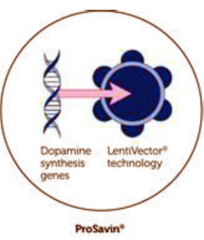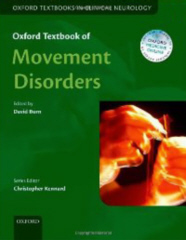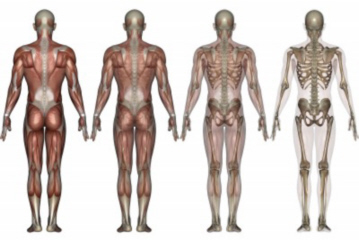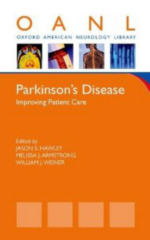23rd January 2014 - New review
RESPIRATORY PROBLEMS
IN PARKINSON'S DISEASE
The excessive muscle contraction that
Parkinson's Disease causes can affect the muscles that control respiration.
Consequently, the breathing rate in Parkinson's Disease can often not be
sustained as well, and breathing efficiency can be reduced
[1]. There is often abnormal ventilatory
control despite normal lung volumes and flows
[2]. Respiratory muscle strength and
endurance also are decreased
[3].
 Due
to the reduced respiratory capacity, people with Parkinson's Disease are
more prone to the effects of pneumonia, which occurs more commonly than
expected in Parkinson's Disease, but not because of Parkinson's Disease
[4]. Consequently, pneumonia is the most
common cause of death associated with Parkinson's Disease
[5]
[6]
[7]
[8]
[9]
[10]
[11]. For more information concerning
pneumonia go to
Pneumonia.
However, death certificates
indicated that Parkinson's Disease was a substantial contributor to the
cause of death in only 20% of people with Parkinson's Disease
[11]. For 80% of people there were other
causes. In order to refer to this article on its own
click here.
Due
to the reduced respiratory capacity, people with Parkinson's Disease are
more prone to the effects of pneumonia, which occurs more commonly than
expected in Parkinson's Disease, but not because of Parkinson's Disease
[4]. Consequently, pneumonia is the most
common cause of death associated with Parkinson's Disease
[5]
[6]
[7]
[8]
[9]
[10]
[11]. For more information concerning
pneumonia go to
Pneumonia.
However, death certificates
indicated that Parkinson's Disease was a substantial contributor to the
cause of death in only 20% of people with Parkinson's Disease
[11]. For 80% of people there were other
causes. In order to refer to this article on its own
click here.
19th January 2014 - New research
VISUAL DISTURBANCES IN PARKINSON'S DISEASE
Parkinsonism Related
Disorders [2013] Dec 27 [Epub ahead of print] (P.Urwyler, T.Nef, A.Killen,
D.Collerton, A.Thomas, D.Burn, I.McKeith, U.P.Mosimann)
Complete abstract
 Visual
symptoms are common in Parkinson's Disease but are frequently
under-diagnosed. The detection of visual symptoms is important for
differential diagnosis and patient management. The causes of visual
symptoms divides between Parkinson's Disease and Parkinson's Disease drugs.
Parkinson's Disease can cause visual disturbances by affecting the muscles
of the eye. Parkinson's Disease drugs in excess can cause visual
hallucinations. Recurring visual
complaints emerged as risk factors predictive of the
minor forms of hallucinations, but not recurrent complex visual
hallucinations.
Visual
symptoms are common in Parkinson's Disease but are frequently
under-diagnosed. The detection of visual symptoms is important for
differential diagnosis and patient management. The causes of visual
symptoms divides between Parkinson's Disease and Parkinson's Disease drugs.
Parkinson's Disease can cause visual disturbances by affecting the muscles
of the eye. Parkinson's Disease drugs in excess can cause visual
hallucinations. Recurring visual
complaints emerged as risk factors predictive of the
minor forms of hallucinations, but not recurrent complex visual
hallucinations.
Researchers established the prevalence of recurrent visual complaints (RVC)
and recurrent visual hallucinations (RVH) in Parkinson's Disease.
The most common visual disturbances were found to be : double vision (in
18% of people with Parkinson's Disease), misjudging objects when walking (in
12%), words moving whilst reading (in 17%), and freezing in narrow spaces
(in 30%), which was almost exclusively found in people with Parkinson's
Disease. The same was true for recurring complex visual hallucinations and
illusions, which were found in 17% of people with Parkinson's Disease.
Recurring visual complaints were found in 43% of people with
Parkinson's Disease. Recurring visual hallucinations were found in
29% of people with Parkinson's Disease. In order to refer to this article on its own
click here.
13th January 2014 - New research
PROSAVIN CLINICAL TRIAL RESULTS FOR PARKINSON'S
DISEASE
The Lancet, Early
Online Publication, 10 January 2014 (S.Palfi, J.M.Gurruchaga,
G.S.Ralph, H.Lepetit, et al)
Complete abstract
ProSavin uses LentiVector gene delivery technology to deliver genes they
suggest are required for the formation of dopamine. The product is
administered locally to the relevant region of the brain in order to
increase the brain's own capacity for the formation of dopamine.
For more information go to
Prosavin
 A
clinical trial assessed the safety and efficacy of ProSavin after bilateral
injection into the brains of 15 people who had Parkinson's Disease for more
than 5 years. Three doses were assessed : low dose, mid dose and high dose.
During the first 12 months 54 drug-related adverse events were reported (51
mild and 3 moderate). The most common adverse events were increased
dyskinesias (in 11 out of 15 patients) and on-off phenomena (in 9 out of 15
patients). No serious adverse events related to the study drug or surgical
procedure were reported. There was a moderate improvement in Parkinson's
Disease symptom scores after 6 months and 12 months.
However, in a previous study moderate improvements started declining after
only 6 months.
In order to refer to this article on its own
click here.
A
clinical trial assessed the safety and efficacy of ProSavin after bilateral
injection into the brains of 15 people who had Parkinson's Disease for more
than 5 years. Three doses were assessed : low dose, mid dose and high dose.
During the first 12 months 54 drug-related adverse events were reported (51
mild and 3 moderate). The most common adverse events were increased
dyskinesias (in 11 out of 15 patients) and on-off phenomena (in 9 out of 15
patients). No serious adverse events related to the study drug or surgical
procedure were reported. There was a moderate improvement in Parkinson's
Disease symptom scores after 6 months and 12 months.
However, in a previous study moderate improvements started declining after
only 6 months.
In order to refer to this article on its own
click here.
12th January 2014 - New book
OXFORD TEXTBOOK OF MOVEMENT DISORDERS
David Burn
 Publisher's
description : This volume covers the basic science and clinical concepts
underlying movement disorders, as well as the diagnosis and treatment of
individual hypokinetic and hyperkinetic movement disorders. Written to aid
understanding and treatment of a wide range of movement disorders, it includes a
section covering the miscellaneous causes that are routinely encountered by
neurologists. It is also supplemented with illustrative video clips that can be
accessed through the concurrent online edition. Although firmly rooted in
evidence-based management approaches, the authors included their own top tips
and experience on the management of difficult cases where no current guidance
exists.
Click here for more details. For
more books concerning Parkinson's Disease go to
Parkinson's Disease Books
Publisher's
description : This volume covers the basic science and clinical concepts
underlying movement disorders, as well as the diagnosis and treatment of
individual hypokinetic and hyperkinetic movement disorders. Written to aid
understanding and treatment of a wide range of movement disorders, it includes a
section covering the miscellaneous causes that are routinely encountered by
neurologists. It is also supplemented with illustrative video clips that can be
accessed through the concurrent online edition. Although firmly rooted in
evidence-based management approaches, the authors included their own top tips
and experience on the management of difficult cases where no current guidance
exists.
Click here for more details. For
more books concerning Parkinson's Disease go to
Parkinson's Disease Books
8th January 2014 - New research
THE PREVALENCE OF MUSCULOSKELETAL PROBLEMS IN PARKINSON'S
DISEASE
Parkinsonism
Related Disorders [2013] 19 (7) : 666-669 (Y.E.Kim, W.W.Lee, J.Y.Yun,
H.J.Yang, H.J.Kim, B.S. Jeon)
Complete abstract
The prevalence of musculoskeletal problems was found to be significantly
higher Parkinson's Disease. Around two thirds of people with Parkinson's
Disease have them. Only just over a quarter of people with Parkinson's
Disease answered that their musculoskeletal problems were recovering.
Musculoskeletal problems also tended to receive less treatment
when people had Parkinson's Disease.
 Common
sites of musculoskeletal problems were the lower back, shoulder and knee in
that order. The lower back was the site of musculoskeletal problems in
nearly half of people with Parkinson's Disease. The shoulder and knee were
affected far less often. Among the past diagnoses associated with
musculoskeletal problems, frozen shoulder, low back pain, osteoporosis and
fracture were more common in people with Parkinson's Disease. Older age,
being female, and having a higher score on the Unified Parkinson's Disease
Rating Scale were associated with more musculoskeletal problems. For
more information go to
Musculoskeletal disorders. In order to refer to this article on its own
click here.
Common
sites of musculoskeletal problems were the lower back, shoulder and knee in
that order. The lower back was the site of musculoskeletal problems in
nearly half of people with Parkinson's Disease. The shoulder and knee were
affected far less often. Among the past diagnoses associated with
musculoskeletal problems, frozen shoulder, low back pain, osteoporosis and
fracture were more common in people with Parkinson's Disease. Older age,
being female, and having a higher score on the Unified Parkinson's Disease
Rating Scale were associated with more musculoskeletal problems. For
more information go to
Musculoskeletal disorders. In order to refer to this article on its own
click here.
7th January 2014 - New book
PARKINSON'S DISEASE : IMPROVING PATIENT CARE
Jason S.Hawley, Melissa J.Armstrong, William J.Weiner
 Publisher's
description : Improving Patient Care is a clinically-focused text for healthcare
professionals involved in the everyday management of Parkinson's disease
patients. Primary care physicians, general neurologists, medical trainees, and
ancillary therapists including mental health professionals, speech therapists,
and physical therapists will all find helpful information regarding caring for
patients with Parkinson's disease. The 12 chapters cover all aspects of
Parkinson's disease care from diagnosis, test selection and early management to
handling complications, deciding whether surgical options are appropriate,
managing Parkinson's disease patients in the inpatient setting and supporting
patients and families during late-stage complications.
Click here for more details. For
more books concerning Parkinson's Disease go to
Parkinson's Disease Books
Publisher's
description : Improving Patient Care is a clinically-focused text for healthcare
professionals involved in the everyday management of Parkinson's disease
patients. Primary care physicians, general neurologists, medical trainees, and
ancillary therapists including mental health professionals, speech therapists,
and physical therapists will all find helpful information regarding caring for
patients with Parkinson's disease. The 12 chapters cover all aspects of
Parkinson's disease care from diagnosis, test selection and early management to
handling complications, deciding whether surgical options are appropriate,
managing Parkinson's disease patients in the inpatient setting and supporting
patients and families during late-stage complications.
Click here for more details. For
more books concerning Parkinson's Disease go to
Parkinson's Disease Books
.gif)
.gif)
 Due
to the reduced respiratory capacity, people with Parkinson's Disease are
more prone to the effects of pneumonia, which occurs more commonly than
expected in Parkinson's Disease, but not because of Parkinson's Disease
Due
to the reduced respiratory capacity, people with Parkinson's Disease are
more prone to the effects of pneumonia, which occurs more commonly than
expected in Parkinson's Disease, but not because of Parkinson's Disease
 Visual
symptoms are common in Parkinson's Disease but are frequently
under-diagnosed. The detection of visual symptoms is important for
differential diagnosis and patient management. The causes of visual
symptoms divides between Parkinson's Disease and Parkinson's Disease drugs.
Parkinson's Disease can cause visual disturbances by affecting the muscles
of the eye. Parkinson's Disease drugs in excess can cause visual
hallucinations. Recurring visual
complaints emerged as risk factors predictive of the
minor forms of hallucinations, but not recurrent complex visual
hallucinations.
Visual
symptoms are common in Parkinson's Disease but are frequently
under-diagnosed. The detection of visual symptoms is important for
differential diagnosis and patient management. The causes of visual
symptoms divides between Parkinson's Disease and Parkinson's Disease drugs.
Parkinson's Disease can cause visual disturbances by affecting the muscles
of the eye. Parkinson's Disease drugs in excess can cause visual
hallucinations. Recurring visual
complaints emerged as risk factors predictive of the
minor forms of hallucinations, but not recurrent complex visual
hallucinations. 
 Publisher's
description : This volume covers the basic science and clinical concepts
underlying movement disorders, as well as the diagnosis and treatment of
individual hypokinetic and hyperkinetic movement disorders. Written to aid
understanding and treatment of a wide range of movement disorders, it includes a
section covering the miscellaneous causes that are routinely encountered by
neurologists. It is also supplemented with illustrative video clips that can be
accessed through the concurrent online edition. Although firmly rooted in
evidence-based management approaches, the authors included their own top tips
and experience on the management of difficult cases where no current guidance
exists.
Publisher's
description : This volume covers the basic science and clinical concepts
underlying movement disorders, as well as the diagnosis and treatment of
individual hypokinetic and hyperkinetic movement disorders. Written to aid
understanding and treatment of a wide range of movement disorders, it includes a
section covering the miscellaneous causes that are routinely encountered by
neurologists. It is also supplemented with illustrative video clips that can be
accessed through the concurrent online edition. Although firmly rooted in
evidence-based management approaches, the authors included their own top tips
and experience on the management of difficult cases where no current guidance
exists.
 Common
sites of musculoskeletal problems were the lower back, shoulder and knee in
that order. The lower back was the site of musculoskeletal problems in
nearly half of people with Parkinson's Disease. The shoulder and knee were
affected far less often. Among the past diagnoses associated with
musculoskeletal problems, frozen shoulder, low back pain, osteoporosis and
fracture were more common in people with Parkinson's Disease. Older age,
being female, and having a higher score on the Unified Parkinson's Disease
Rating Scale were associated with more musculoskeletal problems. For
more information go to
Common
sites of musculoskeletal problems were the lower back, shoulder and knee in
that order. The lower back was the site of musculoskeletal problems in
nearly half of people with Parkinson's Disease. The shoulder and knee were
affected far less often. Among the past diagnoses associated with
musculoskeletal problems, frozen shoulder, low back pain, osteoporosis and
fracture were more common in people with Parkinson's Disease. Older age,
being female, and having a higher score on the Unified Parkinson's Disease
Rating Scale were associated with more musculoskeletal problems. For
more information go to
 Publisher's
description : Improving Patient Care is a clinically-focused text for healthcare
professionals involved in the everyday management of Parkinson's disease
patients. Primary care physicians, general neurologists, medical trainees, and
ancillary therapists including mental health professionals, speech therapists,
and physical therapists will all find helpful information regarding caring for
patients with Parkinson's disease. The 12 chapters cover all aspects of
Parkinson's disease care from diagnosis, test selection and early management to
handling complications, deciding whether surgical options are appropriate,
managing Parkinson's disease patients in the inpatient setting and supporting
patients and families during late-stage complications.
Publisher's
description : Improving Patient Care is a clinically-focused text for healthcare
professionals involved in the everyday management of Parkinson's disease
patients. Primary care physicians, general neurologists, medical trainees, and
ancillary therapists including mental health professionals, speech therapists,
and physical therapists will all find helpful information regarding caring for
patients with Parkinson's disease. The 12 chapters cover all aspects of
Parkinson's disease care from diagnosis, test selection and early management to
handling complications, deciding whether surgical options are appropriate,
managing Parkinson's disease patients in the inpatient setting and supporting
patients and families during late-stage complications.